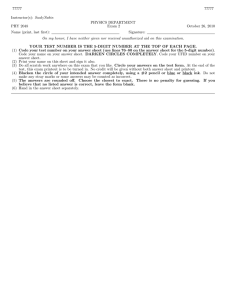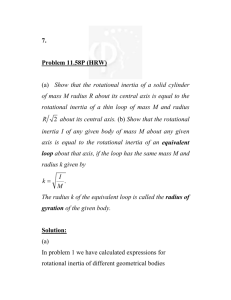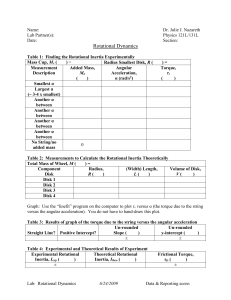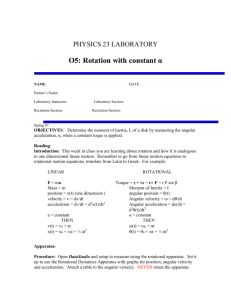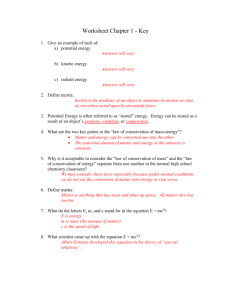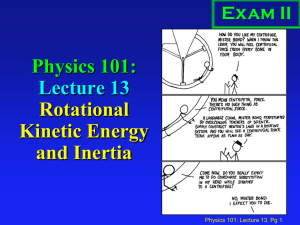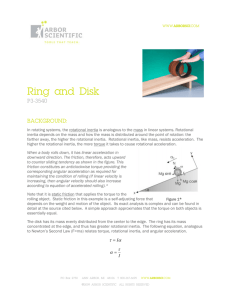Rotational Inertia and Energy
advertisement
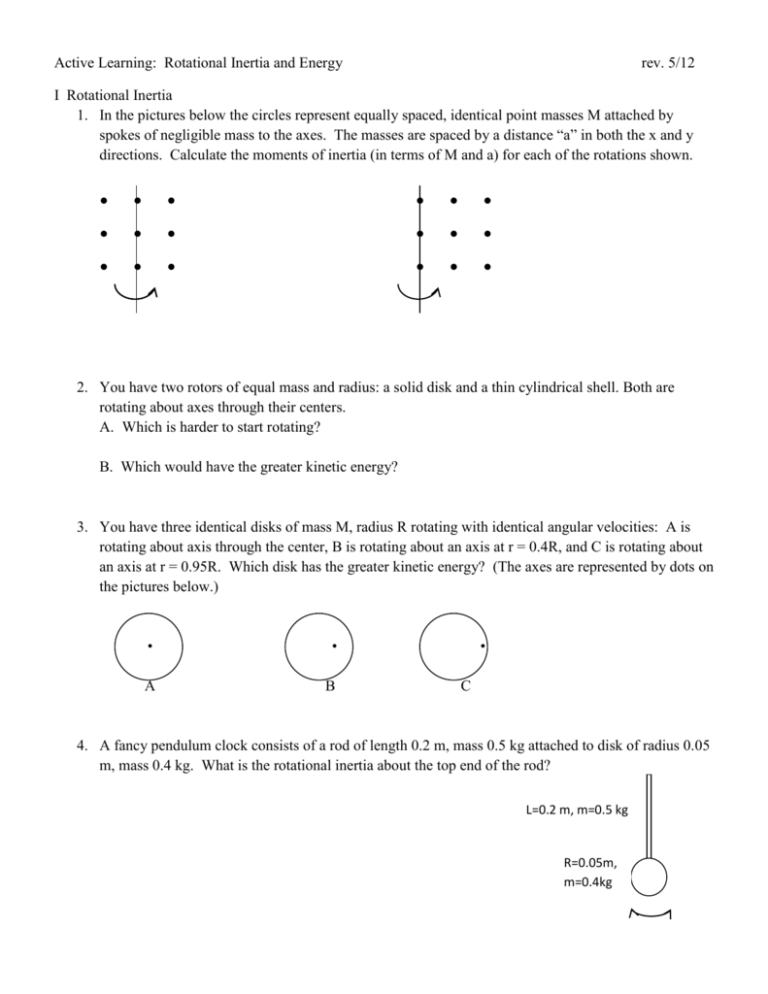
Active Learning: Rotational Inertia and Energy rev. 5/12 I Rotational Inertia 1. In the pictures below the circles represent equally spaced, identical point masses M attached by spokes of negligible mass to the axes. The masses are spaced by a distance “a” in both the x and y directions. Calculate the moments of inertia (in terms of M and a) for each of the rotations shown. • • • • • • • • • • • • • • • • • • 2. You have two rotors of equal mass and radius: a solid disk and a thin cylindrical shell. Both are rotating about axes through their centers. A. Which is harder to start rotating? B. Which would have the greater kinetic energy? 3. You have three identical disks of mass M, radius R rotating with identical angular velocities: A is rotating about axis through the center, B is rotating about an axis at r = 0.4R, and C is rotating about an axis at r = 0.95R. Which disk has the greater kinetic energy? (The axes are represented by dots on the pictures below.) • • A B • C 4. A fancy pendulum clock consists of a rod of length 0.2 m, mass 0.5 kg attached to disk of radius 0.05 m, mass 0.4 kg. What is the rotational inertia about the top end of the rod? L=0.2 m, m=0.5 kg R=0.05m, m=0.4kg Active Learning: Rotational Inertia and Energy 5. A solid disk (m = 2.0 kg, r = 12 cm) is mounted on a axle through its center. A cylindrical shell of the same radius and mass sits on the disk centered about the axis. A small 0.5 kg mass sits on the disk at r = 8.0 cm. What is the rotational inertia of the combination? II Rotational Energy and Conservation of Energy 1. The figure below represents a rotor, I = 0.00054 kg m2, which includes a pulley of radius 0.03 m. The rotor is mounted on a horizontal, frictionless axle. A string wrapped around the pulley on the rotor passes over a massless, frictionless pulley to a hanging 0.20 kg mass. The hanging mass is released from a height of 0.80 m above the floor. A. When the hanging mass is traveling at 1.0 m/s, what are the angular velocity of the rotor, the kinetic energy of the falling mass, and the kinetic energy of the rotor? B. What is the linear velocity of the falling mass just before it hits the floor?

